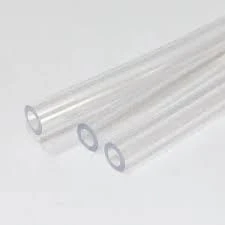Nov . 30, 2024 21:40 Back to list
Is Polypropylene a Safe Material for Cutting Boards in Your Kitchen?
The Safety of Polypropylene Cutting Boards A Comprehensive Analysis
In the kitchen, food safety is paramount, and the tools we use play a pivotal role in ensuring that we adhere to safe culinary practices. Among these tools, cutting boards are essential items that come into contact with various food items, and their material composition significantly impacts their safety. Among the various materials available, polypropylene cutting boards have gained popularity due to their safety features, durability, and ease of maintenance.
What is Polypropylene?
Polypropylene is a type of thermoplastic polymer that is widely used in numerous applications, ranging from packaging to medical devices, and of course, kitchen utensils. It is produced through the polymerization of propylene monomers and boasts excellent resilience, chemical resistance, and low friction properties. These characteristics make polypropylene an ideal material for cutting boards.
Safety Features of Polypropylene Cutting Boards
1. Non-Toxic Composition One of the primary safety attributes of polypropylene is its non-toxic nature. It is free from harmful substances such as BPA (bisphenol A) and phthalates, which can leach into food and pose health risks. This makes polypropylene cutting boards a safe choice for food preparation.
2. Hygienic Properties Polypropylene is resistant to moisture and does not absorb liquids, reducing the chances of bacteria colonization. In fact, many polypropylene cutting boards are designed to be dishwasher-safe, allowing for thorough cleaning and sanitation. This ability to maintain hygiene is crucial in preventing cross-contamination in the kitchen.
3. Durability and Resistance Polypropylene cutting boards are not only sturdy but also resistant to scratching, staining, and warping. Unlike wooden boards that can harbor bacteria in grooves and scratches, polypropylene provides a smooth and reliable surface for cutting. This durability ensures that they last longer, reducing the frequency of replacement and potential waste.
4. Heat Resistance Polypropylene has a higher melting point than many other plastic materials. This feature allows it to withstand moderate heat from hot pots and pans placed on its surface without warping. However, it is essential to note that while polypropylene can tolerate heat, it should not be used as a cutting surface for extremely hot items.
Environmental Considerations
polypropylene cutting board safe

While discussing safety, it is crucial to consider the environmental impact of polypropylene. While polypropylene is recyclable, the recycling infrastructure varies by region. Consumers should be aware of their local recycling rules to ensure that their old cutting boards are disposed of responsibly. Opting for brands that utilize recycled polypropylene can further enhance the environmental benefits.
Best Practices for Using Polypropylene Cutting Boards
To maximize the safety and lifespan of polypropylene cutting boards, following best practices is essential
- Regular Cleaning After each use, wash cutting boards with hot, soapy water or place them in the dishwasher. This ensures that any food particles or bacteria are effectively removed.
- Use Separate Boards It is advisable to use separate cutting boards for different food types—one for raw meats and another for vegetables and ready-to-eat foods. This simple practice greatly reduces the risk of cross-contamination.
- Inspect for Damage Regularly check the cutting board for any signs of wear and tear, such as deep grooves or cracks. If damage is detected, consider replacing the board to maintain food safety standards.
- Store Properly Store cutting boards in a clean, dry place where they can air out between uses. This prevents moisture buildup, which is a breeding ground for bacteria.
Conclusion
Polypropylene cutting boards represent a safe, durable, and hygienic choice for any kitchen. With their non-toxic nature, resistance to bacterial growth, and ease of cleaning, they are an excellent investment for those who prioritize food safety. By following best practices for maintenance and use, individuals can ensure that their cutting boards serve them well while promoting a safe kitchen environment. As culinary practices evolve, the emphasis on choosing safe materials like polypropylene will continue to play a vital role in protecting our health.
-
High-Quality PPR Pipes and Fittings Durable ERA PPR & PVC PPR Solutions
NewsJul.08,2025
-
Black HDPE Cutting Board - Durable, Non-Porous & Food Safe HDPE Plastic Cutting Board
NewsJul.08,2025
-
High-Quality CPVC Panel Durable HDPE & PVC Panels Supplier
NewsJul.08,2025
-
Double PE Welding Rod Supplier - High Strength, Durable & Versatile Welding Solutions
NewsJul.07,2025
-
High-Quality PVC-O Pipe Supplier Durable 75mm PVC Pipe & Connections Leading PVC Pipe Company
NewsJul.07,2025
-
HDPE Drainage Pipe Supplier – Durable & Corrosion-Resistant Solutions
NewsJul.06,2025

